Grave Creek Mound – One Of North America’s Most Curious Ancient Monuments
Ellen Lloyd - AncientPages.com - The Grave Creek Mound (also known as the Mammoth Mound) is located in Moundsville, West Virginia. It is one of the most curious ancient monuments in North America.
At first sight, it appears to be just one of many mounds we find in the country, but there are several reasons why this particular mound is unique.
This is the biggest mound that the Adena people have ever constructed. Constructing the hill required the movement of more than 60,000 tons of earth. It equals about three million basket loads of earth!
North America had four known mound-building cultures - the Poverty Point, Adena, Hopewell, and Mississippian cultures. Their names, usually taken from where relics of their societies were found, refer to a way of life.
The Adena lived in parts of present-day Ohio, Indiana, Wisconsin, West Virginia, Kentucky, New York, Pennsylvania, and Maryland.
The earliest known photo of the Mound - Credit: vandaleer.com
It's important to point out that the Adena culture is not the name of any American Indian tribe. Researchers have yet to learn what these people called themselves. Their name originates from the estate of Ohio Governor Thomas Worthington, which he called Adena.
The Adena culture flourished between 1000 and 200 B.C. At its height, the culture reached a population between eight and seventeen million.
Why The Grave Creek Mound Is Unusual
Archaeologists and historians think the Adena people were the first culture in North America to construct earthen mounds in which they regularly buried their dead. The mounds were often shaped in animal or geometric designs.
Grave Creek Mound Archaeological Complex - Courtesy of TripAdvisor
Standing 65 feet (19.5 m) tall with an outer circumference of 910 feet (273 m), the mound was an awe-inspiring sight, but it was certainly not built overnight.
Grave Creek Mound was constructed in stages over 100 years between 150 and 250 B.C.
What is unusual about this mound, is its size. The Adena people in the area constructed several other burial mounds. However, these mounds are much smaller, ranging from 20 to 300 feet (6 to 90 m) in diameter.
Why was it so important to the Adena people to build a massive mound like the Grave Creek Mound?
The Grave Creek Stone - Credit: vandaleer.com
We do know that the Adena buried their dead in prominent mounds that archaeologists believe may have served as territorial markers. Sometimes, the mounds were accompanied by small, circular earthen enclosures that may have surrounded ritual spaces.
Archaeologists have discovered several ancient objects inside the burial mounds. Deceased individuals were either cremated or laid on their backs and were often surrounded by artifacts such as jewelry and tools. Most likely, the Adena people believed the deceased would need these objects in their afterlife.
The Controversial Grave Creek Stone
The Grave Creek Mound was first discovered in the late 1700s by English immigrant Joseph Tomlinson, who built a house just in front of the mound.
About 60 years later, Tomlinson's descendant Jesse started digging tunnels into the mound and discovered two burial chambers filled with skeletons, jewelry, and seashells.
The controversial Grave Creek Stone was unearthed in 1838 during the burial mound excavation. A small sandstone disk was inscribed on one side with some twenty-five characters.
An artistic rendering of the Grave Creek Stone on display at the Grave Creek Mound and Archaeological Complex in Moundsville, West Virginia. Photo courtesy of Rebecca Taylor.
According to Henry Rowe Schoolcraft, a renowned geologist who visited the site in 1843, the Grave Creek Stone was discovered in the upper vault, along with seventeen hundred beads, five hundred seashells, five copper bracelets, and one hundred and fifty plates of mica. It was "a small flat stone, of an ovate shape, containing an inscription in unknown characters."
Whether Grave Creek Stone was genuine or a fake is impossible to say today because its whereabouts are unknown.
If genuine, it could provide evidence the Adena people mastered a primitive alphabet.
It's likely just a coincidence, but the Grave Creek Mound is remarkably similar in design to the prehistoric earthen Silbury Hill. Both mounds are incredibly identical in design.
Written by Ellen Lloyd – AncientPages.com
Updated on March 2, 2024
Copyright © AncientPages.com All rights reserved. This material may not be published, broadcast, rewritten or redistributed in whole or part without the express written permission of AncientPages.com
Expand for referencesM. C Read - Inscribed stone of Grave Creek mound: Report of M.C. Reid of Hudson, Ohio
Greg Roza - The Adena, Hopewell, and Fort Ancient of Ohio (The Library of Native Americans)
More From Ancient Pages
-
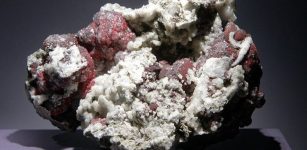 World’s Oldest Mercury Poisoning Revealed In Copper Age Iberia
Archaeology | Nov 16, 2021
World’s Oldest Mercury Poisoning Revealed In Copper Age Iberia
Archaeology | Nov 16, 2021 -
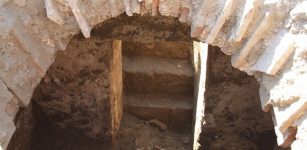 Early Christian Crypt Unearthed In Zaldapa Fortress, Bulgaria
News | Sep 7, 2015
Early Christian Crypt Unearthed In Zaldapa Fortress, Bulgaria
News | Sep 7, 2015 -
 Unexpected Discovery 130,000-Year-Old Neanderthal Stone Tools In Poland
Archaeology | Oct 30, 2023
Unexpected Discovery 130,000-Year-Old Neanderthal Stone Tools In Poland
Archaeology | Oct 30, 2023 -
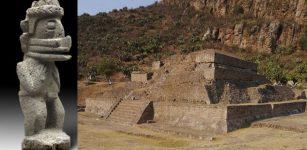 Who Built The Mysterious Huapalcalco Pyramid – Mexico’s Smallest Pyramid?
Featured Stories | Mar 29, 2018
Who Built The Mysterious Huapalcalco Pyramid – Mexico’s Smallest Pyramid?
Featured Stories | Mar 29, 2018 -
 Lost Q Source Remains An Unsolved Biblical Mystery
Biblical Mysteries | May 7, 2017
Lost Q Source Remains An Unsolved Biblical Mystery
Biblical Mysteries | May 7, 2017 -
 Maya Site With At Least 300 Buildings Some Of Which Are Over 8 Meters High – Discovered
Archaeology | Sep 16, 2022
Maya Site With At Least 300 Buildings Some Of Which Are Over 8 Meters High – Discovered
Archaeology | Sep 16, 2022 -
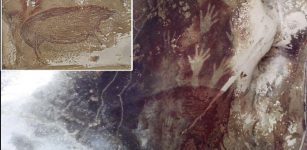 Climate Change Will Soon Erase Ancient Cave Art Of Sulawesi, Indonesia
Archaeology | May 17, 2021
Climate Change Will Soon Erase Ancient Cave Art Of Sulawesi, Indonesia
Archaeology | May 17, 2021 -
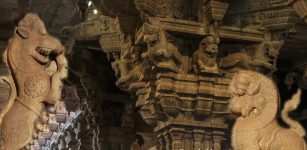 Yali – Divine Protector And Guardian Of Temples Warding Off Evil Forces In Hindu Mythology
Featured Stories | Nov 7, 2020
Yali – Divine Protector And Guardian Of Temples Warding Off Evil Forces In Hindu Mythology
Featured Stories | Nov 7, 2020 -
 Unique Viking Age Shipyard Discovered At Birka Challenges Maritime Activities Of The Viking Age
Archaeology | Jun 16, 2022
Unique Viking Age Shipyard Discovered At Birka Challenges Maritime Activities Of The Viking Age
Archaeology | Jun 16, 2022 -
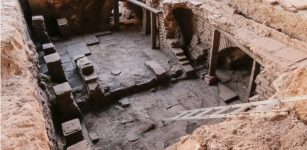 ‘Exceptional’ Ancient Roman Bath Complex Discovered In Mérida, Spain
Archaeology | Aug 21, 2023
‘Exceptional’ Ancient Roman Bath Complex Discovered In Mérida, Spain
Archaeology | Aug 21, 2023 -
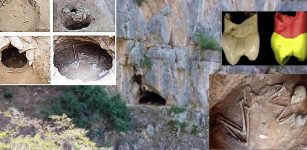 Neanderthals Used Amlash Caves In Iran’s Gilan Province As Shelters
Archaeology | Aug 19, 2020
Neanderthals Used Amlash Caves In Iran’s Gilan Province As Shelters
Archaeology | Aug 19, 2020 -
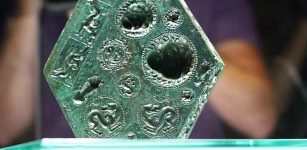 Unique 2,000-Year-Old Hexagonal-Shaped Bronze Matrix Of Sarmizegetusa Regia, Romania
Artifacts | Jan 7, 2016
Unique 2,000-Year-Old Hexagonal-Shaped Bronze Matrix Of Sarmizegetusa Regia, Romania
Artifacts | Jan 7, 2016 -
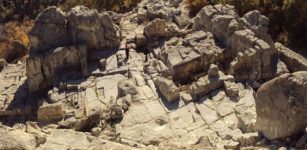 Perperikon – Ancient Secrets Of Bulgaria’s ‘Machu Picchu’ And Europe’s Largest Megalithic Sanctuary
Featured Stories | May 3, 2017
Perperikon – Ancient Secrets Of Bulgaria’s ‘Machu Picchu’ And Europe’s Largest Megalithic Sanctuary
Featured Stories | May 3, 2017 -
 Gallic Leader Vercingetorix In Victorious Battle Of Gergovia, 52 BC
Featured Stories | Jan 23, 2017
Gallic Leader Vercingetorix In Victorious Battle Of Gergovia, 52 BC
Featured Stories | Jan 23, 2017 -
 Yak Milk Consumption Among Mongol Empire Elites – New Study
Archaeology | Apr 1, 2023
Yak Milk Consumption Among Mongol Empire Elites – New Study
Archaeology | Apr 1, 2023 -
 Ancient Symbol Seed Of Life Contains Hidden Secrets Of The Seven Days Of Creation
Ancient Symbols | Oct 8, 2017
Ancient Symbol Seed Of Life Contains Hidden Secrets Of The Seven Days Of Creation
Ancient Symbols | Oct 8, 2017 -
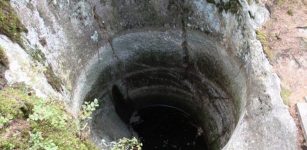 Hiidenkirnut: Spectacular Millennia-Old Devil’s Churns In Finland
Featured Stories | Jan 16, 2017
Hiidenkirnut: Spectacular Millennia-Old Devil’s Churns In Finland
Featured Stories | Jan 16, 2017 -
 Ancient Egyptian Knowledge Of The Cosmic Engine And Unseen God Of The Universe
Featured Stories | Jan 15, 2019
Ancient Egyptian Knowledge Of The Cosmic Engine And Unseen God Of The Universe
Featured Stories | Jan 15, 2019 -
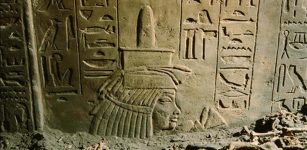 Tomb Of Maia, Tutankhamun’s Wet Nurse In Egypt’s Saqqara Opens To Public
Archaeology | Dec 22, 2015
Tomb Of Maia, Tutankhamun’s Wet Nurse In Egypt’s Saqqara Opens To Public
Archaeology | Dec 22, 2015 -
 Were The Knights Templar Guilty Or Innocent Of The Crimes Laid Against Them?
Featured Stories | Dec 24, 2020
Were The Knights Templar Guilty Or Innocent Of The Crimes Laid Against Them?
Featured Stories | Dec 24, 2020





